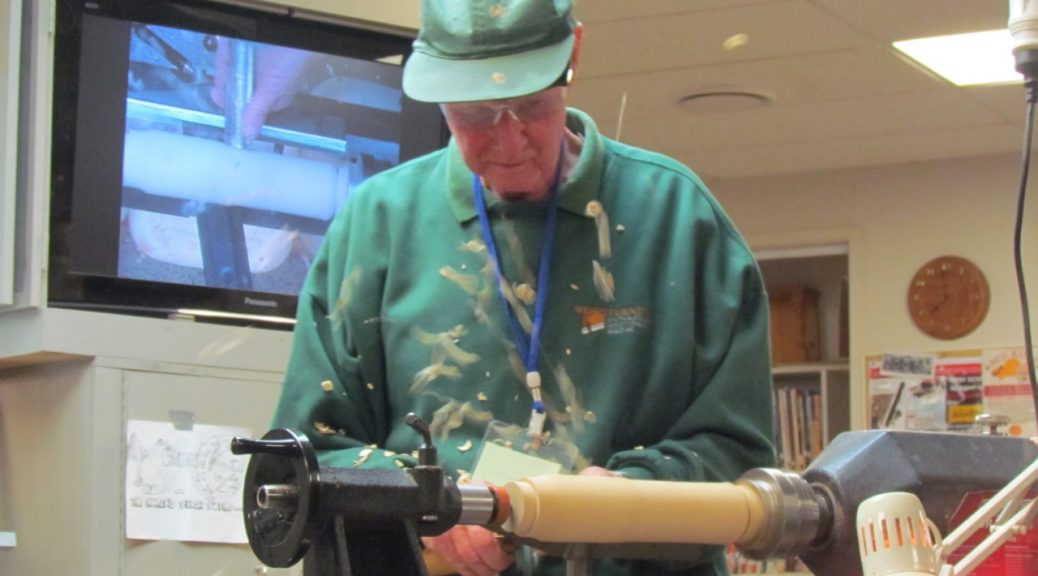Report for 25 July 2018
Report by: Dylan Budd
Jim was demonstrating how he makes his spiral candlestick holders. He usually makes them in pairs, with one having a left handed twist and one having a right handed twist.
He makes them in three sections, as this provides more convenient lengths to work with, and it is easier to keep the internal hole centralised in a shorter piece.
Selection of a good quality auger bit is also essential for a good result. The cheap auger bits with screw points at the front of them do not tend to cut very well, and can wander off centre when drilling the central hole.
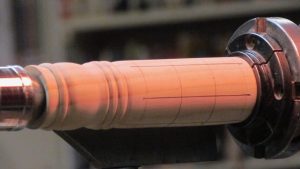
Once you have a round piece of stock at the desired external diameter, select the section that you will do the spiral design on. Establish 6 parallel lines using the index on the lathe, and divide them into three sections. Now use a piece of flexible plastic with a straight edge to join the intersections of these lines on the angle. The accuracy of marking out is critical to ensure an even and equally spaced final product.
Using a V block or a square jig that matches the size of your workpiece (and a rod of the right internal diameter to reduce blowout on the back side of the holes), start drilling holes along the length of these marked out lines (using a stop block to get a round of perfectly lined up holes at each end.)
A ‘brad point’ or ’dowel’ drill bit is essential for this step, as the sharp central point on the drill bit ensures accuracy of the hole placement, and prevents the drill bit from wandering as you drill the holes. It also allows you to partially overlap each hole with the previous one to remove more material with the drilling stage and requires less work by hand at later stages.
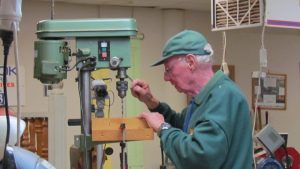
The smaller designs have 72 holes drilled to make the starting point for the spirals, and larger designs can easily require hundreds of holes.
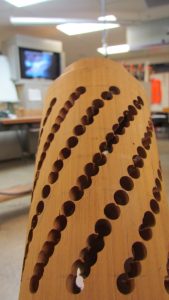
Once all the holes are drilled, start using a sharp bench chisel to remove the waste between holes and smooth out the spirals. Always work with / downhill on the grain, as this will greatly reduce the risk of taking too much material off and ruining all your hard work to this point.
The next step Jim uses is a microplane. He got a right-angled one and squashed it flat in the vice to provide a flat profile that allows him to get into the gaps between the spirals and continue shaping.
Once the planning is finished, the next step is sanding. Hand cut thin strips of sandpaper with tape added to the backing for extra stiffness are threaded through between the spirals and worked back and forth to sand the rounds on the inside of the spirals. Canvas backed sandpaper is also good for this (as is often found on belt sander belts etc)
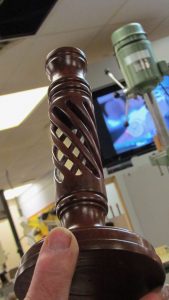
The process can take many days of fine hand tool work, but the finished results can be quite spectacular.
